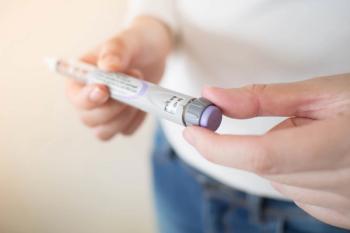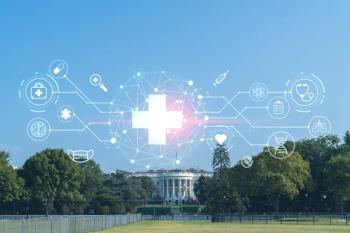
- Drug Topics June 2024
- Volume 168
- Issue 05
Redefining Pharmacy Education for LGBTQ Pain Management
Academic, corporate, and clinical institutions must empower pharmacists to deliver informed and compassionate care to LGBTQ individuals that matches the standard received by their heterosexual and cisgender peers.
Pain management is a cornerstone of pharmacy school curriculum. Through coursework, students gain valuable knowledge in pain mechanisms, pain assessment, and types of pain. Their training equips them with the skills to become pain medication experts, guiding patients on proper dosages, adverse effects, and interactions of drugs. But what happens when the unique pain considerations of entire communities are left out of this teaching?
Over the past decade, the lesbian, gay, bisexual, transgender, and queer (LGBTQ) landscape has witnessed phenomenal advancements spanning
But alongside an increasing number of gender-a ffirming procedures, knowledge among health care providers did not—and has not—kept pace. This trend represents an overarching theme in health care regarding knowledge about pain management among LGBTQ individuals.
Almost 10 years after Section 1557 went into effect, research on pain management in gender-a ffirming surgeries remains limited. Even in trials that do exist, small study sizes have led to inconclusive findings. Instead, providers have had to rely on the experiences of cisgender patients to predict pain in transgender patients undergoing gender-a ffirming surgeries.1 Forced to make assumptions that do not consider the mental health impact of gender dysphoria, societal discrimination, or other stressors uniquely associated with gender transition, health care providers often leave patients feeling isolated by a medical system unprepared to guide them through their postsurgical pain journey.
“Limited and conflicting data describing the prevalence and severity of pain following [gender-affirming surgery] makes it challenging for physicians to counsel their patients on the risk of developing postoperative pain, as well as to predict opioid prescription needs,” said Jennifer T. Anger, MD, MPH, and colleagues in a meta-analysis on pain management in transgender individuals.1 “Such understanding is…essential as a part of supporting the patient by giving an explanation for their symptoms,” pain and otherwise.
The issue of inadequate pain management knowledge for the LGBTQ community extends much further than gender-affirming surgeries and may be rooted in the content of pharmacy school curriculums, as this learning forms the educational foundations of aspiring pharmacists. Studies have shown that there is a concerning lack of training among students around the unique considerations of LGBTQ patients. In a survey answered by 28 pharmacy schools about LGBTQ curriculum, less than half offered any LBGTQ content at all.2 Of the schools that did, only 4% offered more than 4 hours of dedicated instruction, and one-third of respondents who received this instruction rated its quality as very poor.
This lack of training disproportionately impacts an already vulnerable population. LGBTQ individuals are more likely to lack health insurance and live in poverty, as well as to delay or forgo medical care altogether.1 This hesitancy is further fueled by a deep mistrust in the health care system, and for good reason; nearly half of transgender individuals report negative experiences with the medical system, including being refusal of treatment, harassment, assault, or incompetent care, based solely on their gender identity.3 Biases born from a lack of education enforce a vicious cycle whereby patients are further discouraged from seeking care.
“When students are confronted for the first time with a patient whose gender is ambiguous, or discordant with the name or sex in the patient’s file, the chances of having an awkward or offensive experience ensue, potentially worsening the patient’s feelings about health care,” wrote Madalene Mandap, PharmD and colleagues.2 “These awkward experiences can be greatly diminished if that student is prepared to appropriately address the patient according to his or her gender presentation.”
The lack of training on LGBTQ issues also overlooks the unique pain management needs of the LGBTQ community, treating them as identical to those of the heterosexual, cisgender community, despite significant differences.
The LGBTQ community faces a heightened level of discrimination, social stress, exclusion, hatred, and violence, all of which contribute to an increased incidence of anxiety and depression among the population.4 These
What’s more, the Gender Minority Stress and Resilience model demonstrates how chronic social stressors can lead LGBTQ individuals to adopt negative coping behaviors, such as
Pharmacists must also consider the pain management needs associated with pharmacological interventions commonly used by LGBTQ individuals. Hormone therapy may interact with other medications and cause unique adverse effects, necessitating that pharmacists be ready to counsel patients.
According to the CDC, LGBTQ youth are 5 times more likely to attempt suicide compared with their heterosexual peers,7 a statistic that is especially concerning as the percentage of Americans who identify as LGBTQ grows. Currently, 1 in 6 adults in Gen Z belongs to the LGBTQ community.8
Through acknowledging the unique challenges and health problems of LGBTQ [individuals], we can strive to better treat chronic pain and improve the quality of life of all our patients,” said Alaa Abd-Elsayed, MD, MPH, and colleagues in an article published in the Journal of Pain Research.8 “Our failure to do so would represent a violation of the bioethical principle of justice, and as the number of people acknowledging LGBT identification continues to increase, we can hardly afford to do so.”
Pharmacists cannot “consider the welfare of humanity,” as stated in the Oath of a Pharmacist that is recited at every pharmacy school graduation, without first considering the welfare of LGBTQ individuals.9
Education and cultural competency must be prioritized to improve identified disparities among the community. In pharmacy schools, this must include the integration of a wide breadth of LGBTQ health topics into curriculum that delve into both clinical guidelines and inclusivity.
The Accreditation Council for Pharmacy Education recommends the use of standardized patient scenarios, didactic lectures, student reflections, and guest panel discussions to promote cultural sensitivity geared toward the needs of LGBTQ individuals.1 The benefits of such comprehensive training have been previously demonstrated in research that showed student pharmacists who spent 10 or more educational hours studying LGBTQ content felt more prepared, knowledgeable, and culturally competent to care for the community than students who received less education.10
Such cultural training should extend beyond graduation into professional settings to ensure pharmacists are well equipped to interact and address patients in real-world scenarios.
Although progress has been made in LGBTQ pain research, there is also a need to encompass a wider range of experiences into clinical study. Existing literature, such as studies examining postoperative gender-affirming surgery pain in transgender individuals, is valuable but limited by small participant pools. Larger and more diverse cohorts could yield more reliable findings.
As the most accessible health care providers, pharmacists are well positioned to offer pain management counseling and screen patients for potential health problems or diseases. However, a lack of comprehensive LGBTQ education creates a critical gap in their ability to provide truly holistic care. To create a health care system that amplifies marginalized voices, academic, corporate, and clinical institutions must empower pharmacists to deliver informed and compassionate care to LGBTQ individuals that matches the standard received by their heterosexual and cisgender peers.
“In the interest of serving our patients while ensuring their health and safety, we should dedicate ourselves to the welfare of humanity, serving as an ally to those who need it most and are at greatest risk of being marginalized,” said Oliver Grundmann, PhD, and colleagues in a commentary on the pharmacist’s role as an LGBTQ ally.9 “Through combined efforts in academia, corporate settings, and clinical practice, pharmacists can impact and improve lives within their communities, and at times transcend essential patient care to assist in a more holistic manner.”
READ MORE:
Pharmacy practice is always changing. Stay ahead of the curve: Sign up for our
References
1. Anger JT, Case LK, Baranowski AP, et al. Pain mechanisms in the transgender individual: a review. Front Pain Res (Lausanne). 2024;5:1241015. doi:10.3389/fpain.2024.1241015
2. Mandap M, Carrillo S, Youmans SL. An evaluation of lesbian, gay, bisexual, and transgender (LGBT) health education in pharmacy school curricula. Curr Pharm Teach Learn. 2014;6(6):752-758.doi:10.1016/j.cptl.2014.08.001
3. Medina C, Santos T, Mahowald L. Protecting and advancing health care for transgender adult communities. Center for American Progress. August 18, 2021. Accessed May 10, 2024. https://www.americanprogress.org/article/protecting-advancing-health-care-transgender-adult-communities/
4. Gmelin JH, De Vries YA, Baams L, et al. Increased risks for mental disorders among LGB individuals: cross-national evidence from the World Mental Health Surveys. Soc Psychiatry Psychiatr Epidemiol. 2022;57(11):2319-2332. doi:10.1007/s00127-022-02320-z
5. Fredriksen-Goldsen KI, Kim HJ, Shui C, Bryan AEB. Chronic health conditions and key health indicators among lesbian, gay, and bisexual older US adults, 2013-2014. Am J Public Health. 2017;107(8):1332-1338. doi:10.2105/AJPH.2017.303922
6. Holt-Lunstad J, Smith TB, Baker M, Harris T, Stephenson D. Loneliness and social isolation as risk factors for mortality: a meta-analytic review. Perspect Psychol Sci. 2015:10(2):227-237. doi:10.1177/1745691614568352
7. Health disparities in suicide. Fact sheet. CDC. Accessed May 10, 2024. https://www.cdc.gov/suicide/facts/disparities-in-suicide.html
8. Abd-Elsayed A, Heyer AM, Schatman ME. Disparities in the treatment of the LGBTQ population in chronic pain management. J Pain Res. 2021;14:3623-3625. doi:10.2147/JPR.S348525
9. Grundmann O, Segal R, Pullo J, et al. The Pharmacist as an LGBTQ ally. Am J Pharm Educ. 2020;84(7):ajpe7835. doi:10.5688/ajpe7835
10. Nowaskie DZ, Patel AU. LGBT cultural competency, patient exposure, and curricular education among student pharmacists. J Am Pharm Assoc (2003). 2021;61(4):462-469.e3. doi:10.1016/j.japh.2021.02.009
Articles in this issue
over 1 year ago
Diabetes and the Skin: Complications and Prevention Tipsover 1 year ago
Pharmacy in the Digital Ageover 1 year ago
Q&A: How The 2024 Election Looms Large Over Pharmacyover 1 year ago
Q&A: Navigating the Exponential Growth of Specialty Drugsover 1 year ago
Q&A: Understanding Future Impacts of the IRANewsletter
Pharmacy practice is always changing. Stay ahead of the curve with the Drug Topics newsletter and get the latest drug information, industry trends, and patient care tips.
























































































































